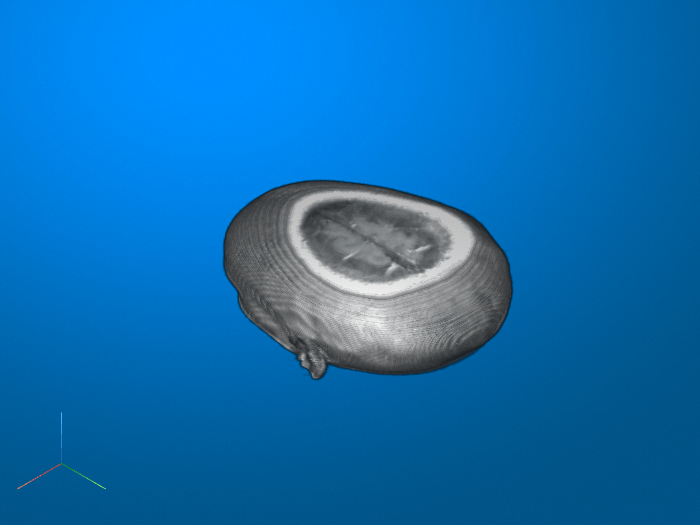imrotate3
Rotate 3-D volumetric grayscale image
Syntax
Description
B = imrotate3(V,angle,W)V by angle degrees
counterclockwise around an axis passing through the origin [0 0
0]. W is a 1-by-3 vector which specifies the
direction of the axis of rotation in 3-D space. By default,
imrotate3 sets the values of voxels in
B that are outside the boundaries of the rotated volume to
0.
B = imrotate3(V,angle,W,method,bbox)bbox. If you
specify "crop", then imrotate3 makes the
output volume the same size as the input volume. If you specify
"loose", then imrotate3 makes the output
volume large enough to include the entirety of the rotated volume.
B = imrotate3(___,"FillValues",fillValues)
Examples
Input Arguments
Output Arguments
Tips
imrotate3assumes that the input volumeVis centered on the origin[0 0 0]. If your volume is not centered on the origin, then useimtranslateto translate the volume to[0 0 0]before usingimrotate3. You can translate the output volumeBback to the original position with the opposite translation vector.
Extended Capabilities
Version History
Introduced in R2017aSee Also
imrotate | imresize3 | imtranslate | imwarp | Volume Viewer



